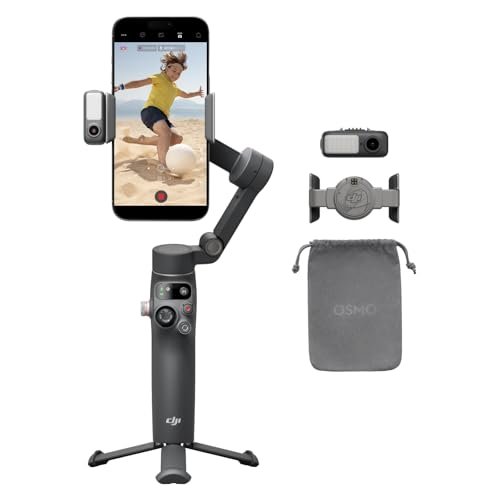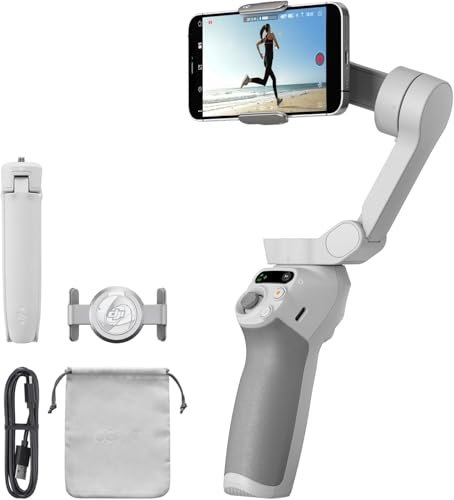So, you’ve invested in the Panasonic S1H – a true powerhouse for professional video production, known for its stunning full-frame sensor and cinematic capabilities. Naturally, to unlock its full potential, especially for smooth, dynamic shots, you’re probably looking for the best gimbal for S1H. While a great gimbal provides the stabilization you need, don’t overlook the smaller, yet equally crucial, components of your rig. We’re talking about the humble HDMI cable, which plays a vital role in connecting your S1H to external monitors or recorders.
Without the right HDMI cable, even the most advanced best gimbal for S1H setup can suffer from dropped signals, messy cable management, or simply not fit well within a compact rig. Choosing the right cable ensures you maintain crystal-clear 4K video monitoring, essential for critical focus and exposure, especially when you’re on the move. Today, we’re diving into two top-notch HDMI cables designed to perfectly complement your Panasonic S1H and its gimbal setup, ensuring a seamless and reliable video workflow. Let’s get into it!
1. SMALLRIG Coiled HDMI Cable 2.0 (A to A), 4K@60Hz 18Gbps

This isn’t just any HDMI cable; it’s a meticulously designed accessory built for the demands of modern filmmaking, particularly when you’re using a camera like the Panasonic S1H on a gimbal. What makes the SmallRig Coiled HDMI Cable stand out is its clever coiled design, which provides fantastic flexibility without creating a tangled mess. It’s the kind of detail that experienced cinematographers truly appreciate, allowing for neat routing and reducing snagging – a common headache on compact camera rigs.
- Durable Coiled Design: Flexible TPU+PVC construction stretches to 47 inches (120 cm) and retracts neatly, eliminating cable clutter for streamlined camera rig setups. Ideal for on-the-go filmmakers and studio environments.
- 4K@60Hz Ultra HD Support: HDMI 2.0 compliant with 18Gbps bandwidth ensures crystal-clear 4K resolution at 60Hz, HDR, and 3D compatibility. Backward compatible with HDMI 1.4 for 1080p workflows.
- Wide Compatibility: Compatible with devices with standard HDMI type A connector, including an HDTV, Computer, TV Stick, Roku, Blu-ray DVD player, PS3, PS4, and Xbox, etc. (for BMPCC 4K&6K, for Panasonic S1H/GH5/GH5S, for Z-cam E2, for Atomos Ninja V, for Hollyland Mars 400, etc.)
- Stable Connection: SmallRig HDMI connector ensures maximum data transmission and provides pure signal transmission, reliable performance for data transfer, vivid video colors and spectacular surround sound while protecting against EMI/RFI interference.
- Complete Video Production Solution: Includes 1 x coiled HDMI cable. Designed for gimbal, camera stabilizer, monitor, wireless video transmitter & receiver and other devices with standard A-type HDMI interfaces to achieve high-speed signal transmission.
Pros:
– Coiled design is excellent for cable management on gimbals and rigs.
– Supports full 4K@60Hz, crucial for the S1H’s capabilities.
– Highly durable and flexible, built for professional use.
– Wide compatibility with various camera and monitor setups.
– Reduces clutter significantly, improving workflow speed.
Cons:
– Coiled design might be too short for some very extended setups, though it’s perfect for most gimbal rigs.
– Can exert a slight pull if fully stretched, depending on the weight of connected devices.
User Impressions:
Filmmakers rave about the convenience and reliability of this cable. Many appreciate how it keeps their rigs tidy, preventing snags and allowing for smoother operation, especially during dynamic shots. Users specifically note its robust build quality and consistent signal transmission, even in demanding production environments. It’s seen as a staple for any serious S1H owner building a portable setup.
2. EVO Gimbals Ultra Thin HDMI Cable, Reflex Ultra Thin HDMI

When every millimeter counts on your camera rig, especially with the best gimbal for S1H you can get, the EVO Gimbals Ultra Thin HDMI Cable truly shines. This cable is specifically engineered for situations where space and flexibility are paramount. Its incredibly slim 2.5mm diameter and high-grade silicone construction make it exceptionally pliable, allowing it to bend and route in ways other cables simply can’t. This is a game-changer for intricate camera cage setups and achieving perfect balance on your gimbal.
- HDMI Camera Cable: The EVO ReFlex Ultra Thin & Flexible HDMI cable is designed for camera rig applications where cable flexibility and routing is a priority. This cable allows you to connect digital cameras, camcorders, tablets or other micro HDMI devices to the HDMI port on most field monitors or similar displays.
- Ultra Thin 2.5mm diameter cable: Built from high grade silicone with proprietary flexible strands for the best in strength and flexibility.
- Designed for gimbal, camera stabilizer and camera rig applications: Where flexibility and compact cable routing is required.
- Supports 4K@60Hz Video Output via HDMI V2.0: Supports Ultra HD 4K@60Hz, Full HD 1080P, 3D, Ethernet, ARC Audio Return Channel, HDR.
- Length: 36 inches (920mm)
- IN THE BOX: 1 x EVO Gimbals ReFlex HDMI Cable (HDMI Type A to HDMI Type A – Male to Male)
Pros:
– Extremely thin and flexible, making it ideal for tight spaces and complex routing.
– High-grade silicone construction ensures durability and prevents kinking.
– Full 4K@60Hz support with HDMI 2.0 ensures future-proofing.
– Reduces strain on camera and monitor ports due to its lightweight and flexibility.
– Perfect for achieving optimal balance on your gimbal.
Cons:
– Standard length might require extensions for very long-reach setups.
– Its thinness, while a pro for flexibility, might make some users perceive it as less rugged (though reviews suggest otherwise).
User Impressions:
Users frequently highlight the EVO Gimbals cable’s exceptional flexibility as its defining feature. They report that it’s a lifesaver for tricky camera cage setups, allowing them to route the cable exactly where needed without fighting stiff wires. Many appreciate how it reduces tension on their HDMI ports and helps with achieving perfect gimbal balance, making it a favorite for those aiming for a truly optimized and compact rig.
Conclusion
Building the ultimate video rig around your Panasonic S1H, complete with the best gimbal for S1H, isn’t just about the big pieces of gear. It’s also about the crucial little components that tie everything together smoothly. These two HDMI cables, while seemingly minor accessories, play a massive role in ensuring your external monitor feed is reliable, your rig is tidy, and your focus on capturing amazing footage remains undisturbed.
Whether you prefer the clutter-free efficiency of the SmallRig coiled cable or the ultra-flexible, space-saving design of the EVO Gimbals cable, both are excellent choices that will significantly enhance your S1H filmmaking experience. Choose the one that best suits your specific rig’s needs and get ready to create some truly stunning video!
FAQ Section: Enhancing Your Panasonic S1H Gimbal Setup
Q1: Why are specialized HDMI cables important for gimbal setups?
A1: Standard HDMI cables can be bulky and stiff, making them difficult to route cleanly on a compact gimbal rig. Specialized cables, like the ones reviewed, offer features like coiling or ultra-thin designs, which improve cable management, prevent snags, reduce strain on ports, and help maintain proper gimbal balance.
Q2: What is the benefit of a coiled HDMI cable for a gimbal?
A2: Coiled HDMI cables offer variable length while minimizing excess slack. They expand when needed and retract neatly, reducing clutter and the risk of the cable getting caught on moving parts of the gimbal or snagging on objects during filming.
Q3: Is HDMI 2.0 necessary for my Panasonic S1H?
A3: Yes, if you plan to record or monitor 4K video at 60 frames per second (4K@60Hz) or utilize advanced features like HDR. HDMI 2.0 provides the necessary bandwidth (18Gbps) for these higher resolutions and frame rates, ensuring a crisp and smooth signal to your external monitor or recorder.
Q4: How does cable flexibility impact gimbal performance?
A4: Highly flexible cables reduce the resistance and pull on your camera and gimbal motors. Stiff cables can introduce micro-vibrations or make it harder for the gimbal to maintain perfect balance, potentially affecting the smoothness of your footage. Flexible cables allow for easier routing and less interference with the gimbal’s movement.
Q5: Can I use any HDMI cable with my Panasonic S1H?
A5: While a basic HDMI cable might technically connect, it’s not recommended for professional video production or gimbal use. You risk signal drops, especially with 4K footage, or dealing with an unwieldy cable that hinders your workflow and potentially damages your gear. Investing in a high-quality, purpose-built cable is always a good idea.
Q6: What other accessories are essential for a Panasonic S1H gimbal rig besides cables?
A6: Besides a quality HDMI cable, you’ll want a reliable external monitor for critical viewing, extra batteries for both your S1H and the gimbal, ND filters for exposure control, and potentially a quick-release plate system for fast setup and breakdown. A wireless video transmitter could also be beneficial for larger productions.
Q7: How do I ensure my cables don’t interfere with gimbal balance?
A7: Choose lightweight, flexible, or coiled cables designed for gimbal use. Route them neatly and securely with small cable ties or clips close to the camera body and monitor. Avoid long, dangling loops, as these can shift weight and throw off your gimbal’s meticulously calibrated balance.


